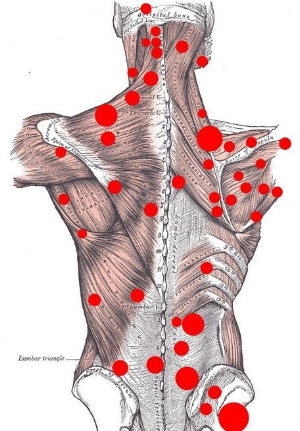
Skeletal muscles primarily function our way of moving by attaching to other muscles and joints. When those muscles get knotted up, like when you sleep on your neck wrong, or have a back spasm, trigger points develop causing the muscle to shorten and become dysfunctional. Myofasical trigger points prevent normal muscle function, not allowing the muscle to contract or relax as it should. These highly sensitive trigger points in the muscle can cause sensory, motor, and autonomic symptoms.
When myofascial trigger points are not treated early, they can cause stress in the dysfunctional muscle fibers and lead to more trigger points developing in the muscle or the compensating muscles (a snowball effect that could effect a lot of the musculoskeletal system). Sort of like when you sprain an ankle, you put more weight onto the opposite foot, which puts added stress onto the healthy ankle.
Diagnosing Myofascial Pian
History of myofascial pain, and/or muscle or joint dysfunction is what gets most people into the doctor’s office. Myofasical pain and dysfunction usually occurs in more than one area of the body and can include:
- Long lasting pain 3-6 months
- Trigger point(s) noticed during a physical exam
- Tight muscle band from muscle contraction
- Pain in other areas of the body connected to other areas of the body
- Decreased mobility
- Muscle weakness
Often times myofascial pain can be falsely attributed to sciatica if the trigger points involve the piriformis muscle. It’s important to talk with your doctor and be descriptive when telling them about your pain, so they can make an accurate diagnosis.
Treatment options for myofascial pain can include massage therapy either self-guided or by a trained trigger point specialist; electrical stimulation, or injections into the trigger point by a pain specialist.
 Skip to content
Skip to content
